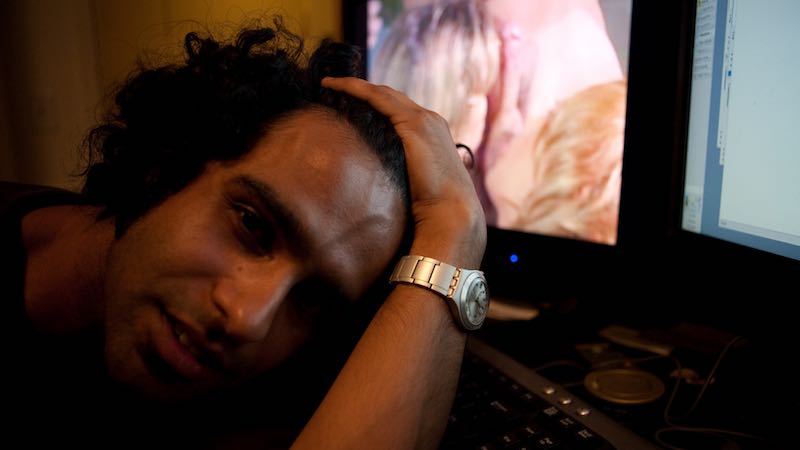Does porn addiction even exist?
- 14 April 2014
- Posted by: Michael H Hallett
- Category: Pornography ,

Our society regards porn users as vile, weak-willed, despicable beings that choose to gorge themselves on sexualised images of women. The key word here is ‘choose’. There is still widespread disbelief in medical circles that sex and pornography addiction even exist; to date neither is recognised in the clinical bible, the Diagnostic and Statistical Manual of Mental Disorders.
There is still widespread disbelief in medical circles that sex and pornography addiction even exist; to date neither is recognised in the clinical bible, the Diagnostic and Statistical Manual of Mental Disorders.
As Dr Brooke Magnanti writes in The Sex Myth, “sexual addiction and sexual compulsion represent pseudoscientific codifications of prevailing erotic values rather than bona fide clinical categories.”
Yet the guilt, shame and self-disparagement of porn are very real.
Sex Row
A proponent of this view is Dr David Ley, PhD, author of The Myth of Sex Addiction. Ley cites the example of Phil Varone, the former Skid Row drummer who admitted having sex with over 3,000 women and has been labelled a sex addict. Varone himself rejects the label, claiming his sexual conquests never impacted his life; hence (according to Ley) sex addiction is a myth.
The numbers, however, aren’t important. It’s the feelings that accompany those experiences. If Varone has sex with all these women as a joyful expression of his own individuality and is in total control of his choices then no, he’s not an addict. But if he stumbles from one compulsive screw to the next, desperate for the sexual high but afterwards feeling guilty and ashamed, wanting to get off the merry-go-round but lacking the self-control to do so, then yes, he’s an addict, even if his behaviour doesn’t derail his life.
While Ley pens The Myth of Sex Addiction, Patrick Carnes, equally PhD, writes Out of the Shadows: Understanding Sexual Addiction. Carnes, executive director of sexual addiction programmes at Del Amo Hospital in California, has spent decades assisting those whose lives have been wrecked by an inability to control their sex and/or porn urges. He is in no doubt that such behaviour qualifies as an addiction—not on clinical standards but on behavioural ones.
Divergent texts
The production of such divergent texts by two highly qualified authors shows that sex-related addiction is significantly misunderstood even in academic circles. What it also highlights is those such as Ley who reject porn addiction lack empathy for its victims. Ley dismisses sex and porn addiction as labels used by the weak-willed to excuse poor choices.
This used to be termed a ‘lack of moral fibre’. It seems unlikely that Ley has ever been sucked down the whirlpool of unsatisfied cravings, the momentary high, the relief, guilt and shame of the sex addict’s carousel. The addict can ‘choose’ to not view porn, but only until the pain of that choice becomes overwhelming and another ‘choice’—to return to porn—inevitably ensues.
Where I agree with Ley is his assertion that the addiction label shouldn’t be used to avoid emotional responsibility. Only by assuming responsibility for their behaviour can the addict gain access to the distorted beliefs that trigger their binges. But that’s another post for another day.
Ultimately, the question of whether or not porn addiction even exists is a choice of perspective. Do you prefer the abstract criteria of clinical definitions or the behavioural approach with its empathy and humanism? Personally, I’ll go for humanism every day.
Next steps
For further resources on pornography, both free and paid, please click on this image.
Photo: Bharat by Jens Karlsson on Flickr

